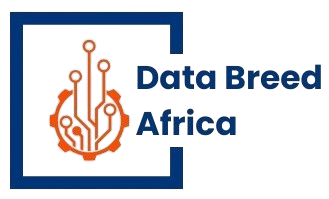In today’s hyper-connected digital landscape, enterprises face an ever-growing challenge: securing their networks against unauthorized access, rogue devices, and evolving cyber threats. This is where Network Access Control (NAC) steps in as a critical component of enterprise cybersecurity. And as threats become more sophisticated, Next-Gen NAC solutions are redefining how modern organizations stay secure and compliant.
At Data Breed Africa, we emphasize NAC as a core pillar of enterprise cybersecurity because it enables organizations to strengthen digital trust, maintain compliance, and secure hybrid infrastructures across industries.

Understanding Network Access Control (NAC)
Network Access Control (NAC) is a security solution that enforces policies to control which devices and users can access a network. It ensures that only authenticated, compliant, and trusted endpoints are allowed to connect—whether they are wired, wireless, or remote.
Traditional NAC systems typically perform:
- Device authentication and profiling
- User identity verification
- Policy enforcement based on roles, location, and device posture
- Real-time monitoring and response
This makes NAC foundational to securing enterprise IT and OT environments. We see NAC as a gateway to building stronger Zero Trust ecosystems across African enterprises.
Why Enterprises Need NAC
- Zero Trust Architecture Enablement
NAC is foundational to implementing Zero Trust, a security model that assumes no user or device is trustworthy by default. NAC enforces granular access controls and continuously verifies trust before granting access. - Endpoint Visibility and Control
Modern enterprises have a mix of managed and unmanaged devices—laptops, smartphones, IoT, OT systems, and guest devices. NAC provides complete visibility into every device on the network and allows administrators to control access dynamically. - Regulatory Compliance
NAC helps organizations meet compliance requirements such as:
- HIPAA (Healthcare)
- PCI DSS (Finance)
- GDPR (Data privacy)
- NIST & ISO 27001 (Government and global standards)
By enforcing security policies and maintaining audit trails, NAC supports regulatory audits and risk management. Data Breed Africa regularly helps organizations prepare for and pass compliance assessments through NAC-enabled visibility and policy enforcement.
- Threat Containment and Response
NAC solutions can detect compromised devices or policy violations and automatically quarantine them or restrict access. This rapid response capability is vital for minimizing the impact of cyberattacks. - Secure BYOD and Guest Access
With the rise of Bring Your Own Device (BYOD) and hybrid work, NAC ensures that personal or guest devices are isolated from sensitive enterprise resources unless they meet security requirements.
Real-Life NAC Use Cases Across Key Industries
NAC isn’t just theoretical—it’s actively protecting networks across industries. Below are sample use cases from different verticals:
- Financial Institutions (Banks & Insurance)
- Ensure only authorized teller systems and ATMs connect to the core banking network.
- Restrict employee BYOD to a secure, segmented network.
- Enforce compliance with PCI DSS and ISO 27001 by validating device posture before granting access.
- We’ve seen NAC play a major role in safeguarding mobile banking applications and customer trust.
- Government Agencies
- Protect sensitive citizen data by requiring MFA and strict device posture checks.
- Automatically block or quarantine rogue and unauthorized devices attempting to connect.
- Support compliance with NIST, GDPR, and national cybersecurity frameworks.
- Healthcare & Hospitals
- Verify medical devices and staff laptops before accessing patient health records.
- Quarantine non-compliant or outdated devices to avoid ransomware entry points.
- Enable segmentation between patient monitoring devices and guest Wi-Fi.
- Universities & Education Institutions
- Enforce antivirus and patch requirements before students connect to campus Wi-Fi.
- Isolate student traffic from faculty and research systems to protect intellectual property.
- Provide secure guest access for events without risking exposure of core systems.
- Telecommunications Providers
- Restrict access to internal telecom infrastructure, ensuring only authorized engineers’ devices connect.
- Secure customer-facing applications by segmenting them from internal operational networks.
- Detect and contain rogue base stations or untrusted devices in real time.
- Energy & Utilities
- Protect power grids and water supply systems by enforcing strict authentication for OT/SCADA devices.
- Ensure vendor laptops are patched before connecting to operational systems.
- Segment IoT devices such as smart meters from control center networks.
- Non-Governmental Organizations (NGOs)
- Protect donor and beneficiary data by ensuring only verified devices connect to internal systems.
- Provide secure access for field workers using temporary or mobile devices.
- Prevent accidental data leaks by enforcing endpoint compliance checks.
- Manufacturing & Industrial Plants
- Control access for contractors and engineers connecting to OT networks.
- Quarantine compromised IoT sensors to avoid production downtime.
- Segment IT and OT environments to reduce cross-contamination of threats.
- Logistics & Transportation
- Ensure only authorized handheld scanners and warehouse systems connect to logistics applications.
- Secure vehicle telematics and IoT tracking systems from cyber threats.
- Provide contractors and delivery partners with restricted, monitored access.
Across all these industries, Data Breed Africa works with organizations to tailor NAC solutions to their specific operational and compliance needs.
NAC vs. Next-Gen NAC: What’s the Difference?
While traditional NAC focused mainly on device authentication and network access policies, Next-Gen NAC goes further by addressing today’s complex IT ecosystems.
| Feature | Traditional NAC | Next-Gen NAC |
| Scope | Wired & wireless endpoints | IT, IoT, OT, cloud & hybrid |
| Policy Enforcement | Static policies | Adaptive & risk-based |
| Integration | Limited to directory services | Deep integration with SIEM, SOAR, MFA, EDR/XDR |
| Deployment | On-prem, agent-heavy | Cloud-ready, agentless + agent-based options |
| Trust Model | One-time check at access | Continuous validation, Zero Trust aligned |
Next-Gen NAC provides real-time visibility, continuous monitoring, AI-driven analytics, and automated response—making it the modern choice for enterprises facing advanced cyber threats. At Data Breed Africa, we strongly advocate for organizations to consider Next-Gen NAC as part of their broader Zero Trust journey.
Deployment Models: Inline vs Out-of-Band
Organizations can deploy NAC in two main ways:
- Inline (Network Access Switch – NAS): NAC sits directly in the traffic path to enforce access decisions in real-time.
- Out-of-Band Management (OOBM): NAC works via network switches, controllers, or firewalls without sitting in the direct traffic path, reducing latency while still enforcing controls.
Many modern solutions offer hybrid approaches for performance and scalability. We help enterprises assess which deployment model best aligns with their network design and growth roadmap.
Integration with Other Security Technologies
Next-Gen NAC is not a standalone silo—it integrates seamlessly with other critical tools, including:
- SIEM (Security Information and Event Management): For unified threat detection and compliance reporting.
- SOAR (Security Orchestration, Automation, and Response): For automated incident response workflows.
- MFA (Multi-Factor Authentication): For stronger user identity verification.
- EDR/XDR solutions: To enhance endpoint detection and response.
By supporting these integrations, NAC becomes a central enabler of enterprise security ecosystems, something Data Breed Africa actively supports through its cybersecurity advisory and implementation services.
Popular NAC and Next-Gen NAC Solutions
Some of the leading NAC vendors include:
- Cisco Identity Services Engine (ISE): Next-Gen NAC with enterprise-grade scalability.
- Aruba ClearPass: Next-Gen NAC with strong policy management.
- Forescout: Next-Gen NAC with agentless visibility, IoT/OT coverage, and deep integrations.
- Portnox: Cloud-native Next-Gen NAC with Zero Trust capabilities.
- FortiNAC (by Fortinet): Next-Gen NAC integrated with Fortinet’s security fabric.
We guide organizations in selecting and deploying these solutions based on size, budget, compliance obligations, and operational needs.
Conclusion
As cyber threats grow more sophisticated and networks become more complex, Network Access Control is no longer optional—it’s essential. NAC empowers enterprises to secure their digital perimeter, enforce compliance, and build a resilient cybersecurity posture.
At Data Breed Africa, we are passionate about helping organizations across the continent adopt modern cybersecurity solutions, from NAC to Next-Gen enterprise security architectures. We combine global expertise with local context to ensure your digital transformation journey is secure, scalable, and future-ready.
What about you?
Have you deployed NAC or are you considering Next-Gen NAC for your organization? We’d love to hear your thoughts—share them in the comments below and join the conversation.
👉 If you found this article useful, feel free to share it with your network.
👉 To explore how NAC and other cybersecurity solutions can strengthen your enterprise, visit us at www.databreedafrica.com or reach out to our team for tailored guidance.
Email: info@databreedafrica.com
Call / WhatsApp: 0743279990 /0208050022
Head Office: China Centre, Kilimani Nairobi
Thank you for reading, please share this with your network.
